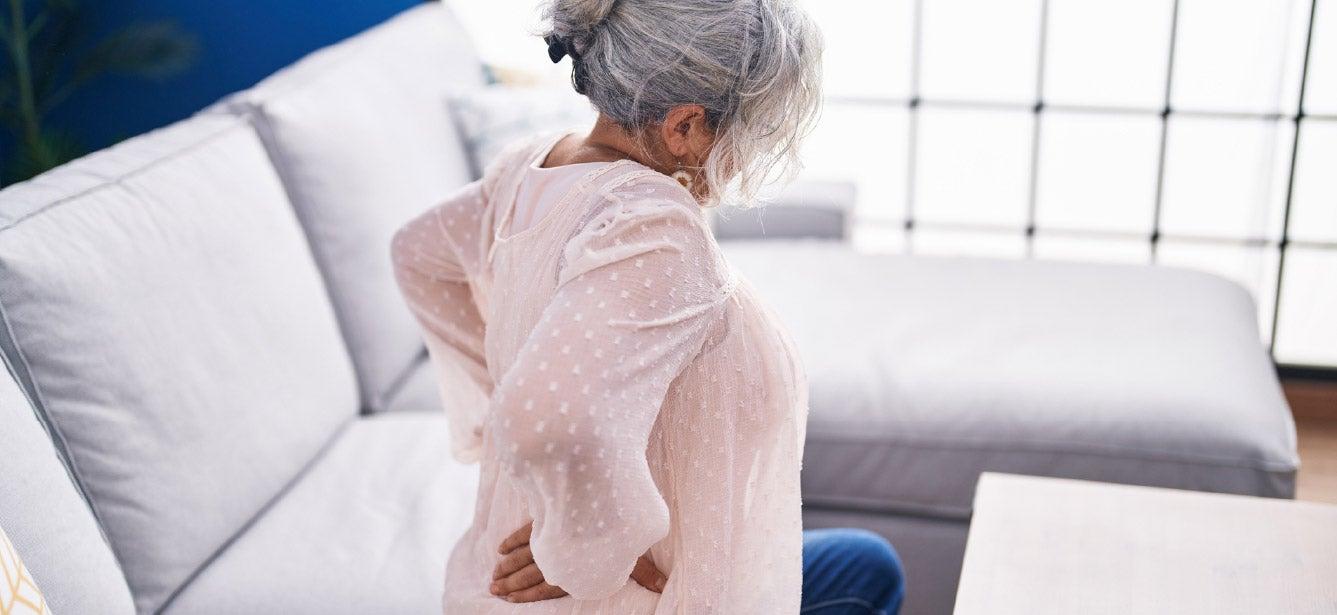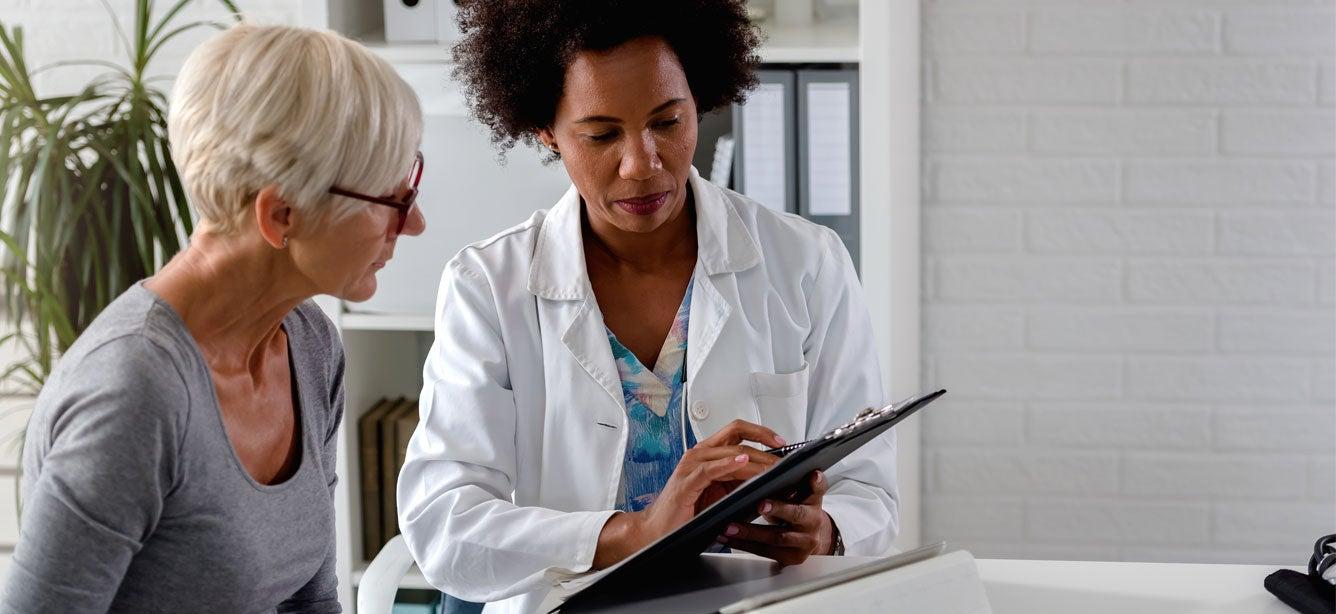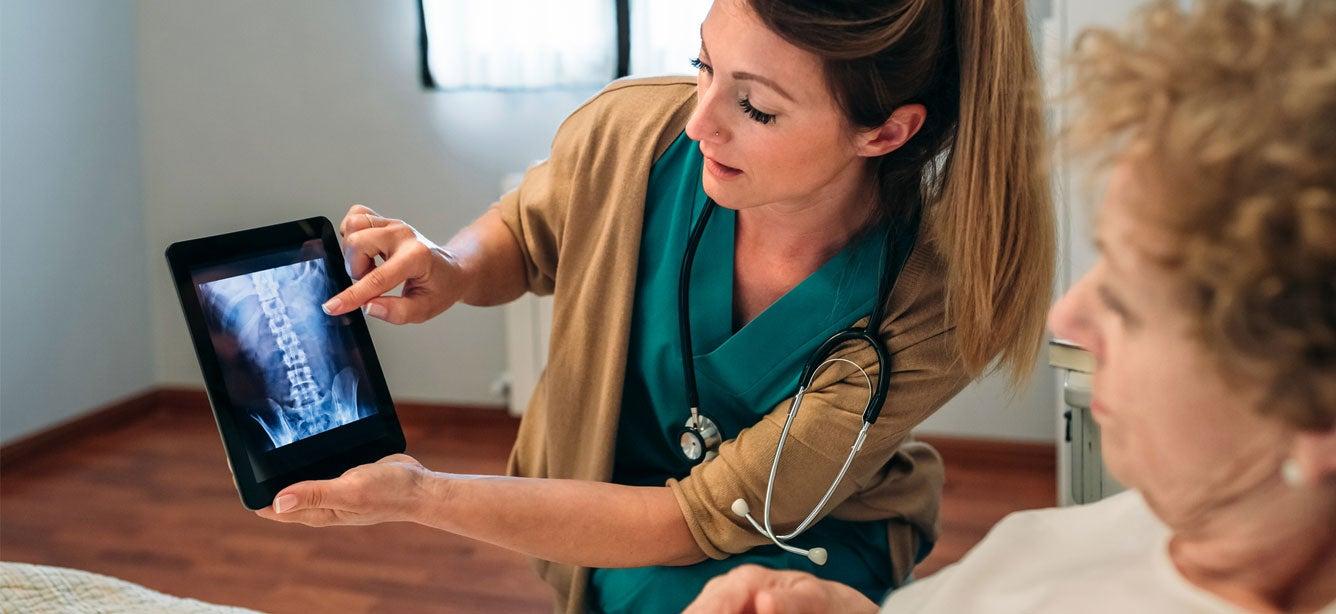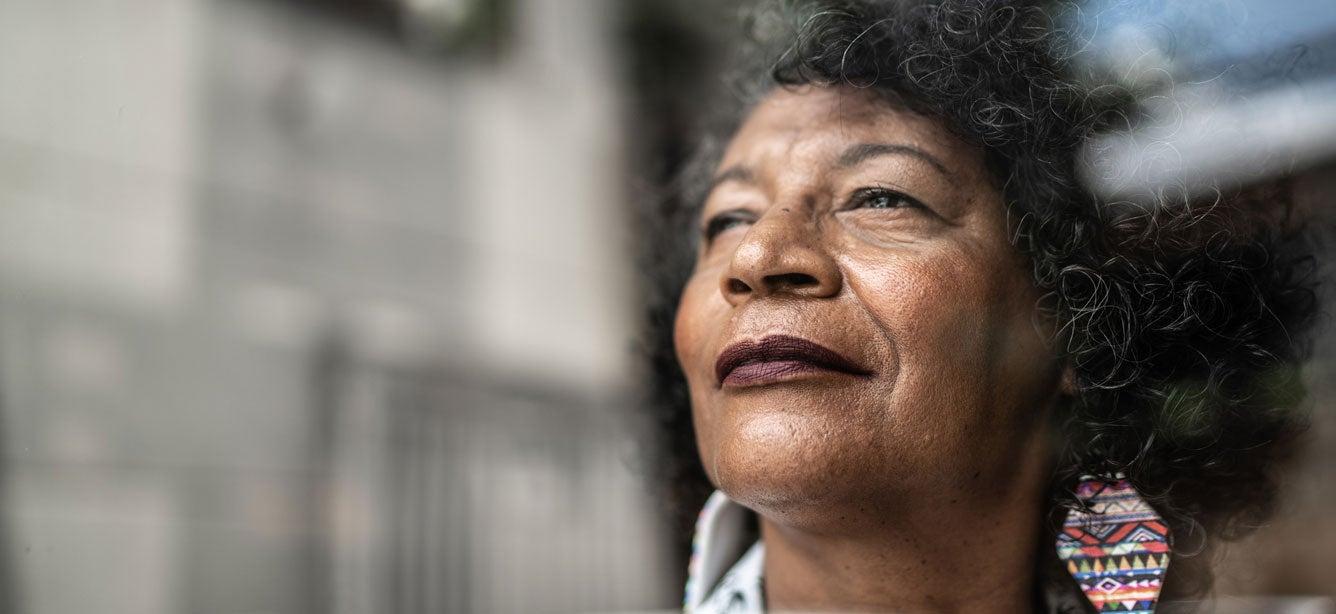
Related Topics
Most likely, you’ve heard of osteoporosis—a “silent disease” affecting more than 54 million U.S. adults, including two million men like Ed Doyle.1
But have you heard of osteopenia? This clinical term describes a condition that also affects the bones and can sneak up on us as we age. That’s because the gradual loss of bone mineral density and strength that causes it doesn’t produce any obvious symptoms.
“No matter what you do, bone mass decreases as we age, however early diagnosis of osteopenia can help prevent future problems, ,” said Dorothea Vafiadis, Senior Director of NCOA’s Center for Healthy Aging. “If your doctor notices an increased risk for bone loss, such as family history of osteoporosis, she or he can recommend a test, which can uncover subtle changes in bone mass density before it’s too late to do anything about it.”
Could you be at risk? Take steps now to understand what osteopenia is, what triggers it, and what you should do if you have it—so you can better protect your bone health.
What is osteopenia?
Osteopenia sounds a lot like osteoporosis, but the two conditions are different.
Having osteopenia means that your bones are less dense than normal. And to some degree, this is a natural part of aging. “Our bodies constantly shed bone and regenerate new tissue to replace it,” Vafiadis explained. “But that process slows down over time.”
Eventually, it flips. After about age 50, most people lose more bone than their bodies can create.
People who literally start out strong can best weather this flip and may never experience its ill effects. And it stands to reason: those who achieve peak bone mass when they’re younger have more tissue to lose as they age. Still, a variety of health and lifestyle factors can negatively impact bone health. “And that can lead to measurable bone density loss no matter who you are,” Vafiadis added.
Unlike in osteoporosis, this decreased bone density isn’t so serious that it leads to easy fracture. That makes osteopenia much simpler to address and manage.
Osteopenia always comes before osteoporosis,” said Vafiadis. “But it doesn’t always turn into it. When discovered early, patients have an excellent chance of stopping it in its tracks.”
What causes osteopenia?
A loss of bone density that naturally occurs with age but can worsen in the presence of certain health and lifestyle factors (more on this below).
Who is most likely to get osteopenia?
Almost anyone over the age of 50 can develop this condition. In fact, an estimated 18 million Americans already have it.2 The causes and risk factors for osteopenia are very similar to those for osteoporosis. Some—like sex, ethnicity, and age—are beyond our control (post-menopausal, non-Hispanic white and Asian women are most likely to develop the condition).
Other causes and risk factors for osteopenia include:3
- Diet. Not getting enough calcium and Vitamin D can weaken your bones. So can drinking too much alcohol, which prevents your body from absorbing key nutrients including calcium.
- Smoking. Like alcohol, smoking interferes with calcium absorption and can also accelerate bone loss.
- Pre-existing conditions. If you have diabetes, celiac disease, thyroid problems, or other autoimmune issues, your risk for osteopenia is higher.
- Prescription drugs. If you take certain prescription drugs, such as steroids or some anti-cancer agents, you may experience decreased bone density.
What are some common osteopenia symptoms?
Osteopenia can be tricky to recognize because it generally doesn’t have any symptoms.
In fact, most people don’t realize they have low bone density until they experience a fracture. “At that point,” Vafiadis explained, “their bone loss likely already has progressed to osteoporosis.”
That’s why doctors recommend DXA scans (bone density tests) for patients who meet specific screening criteria. Short for “duel-energy X-ray absorptiometry,” these easy, inexpensive, and painless tests measure the mineral content in your bones—usually in the hips, spine, and wrists.4 This helps identify early changes before they become problematic. It also arms you with the information you need to better protect the bone health you have.
Who should get a DXA scan for osteopenia?
The U.S. Preventive Services Task Force recommends screening for:5
- All women age 65 and over
- Post-menopausal women under age 65 at higher risk for osteoporosis
The task force stops short of recommending screening for men due to “insufficient evidence,” but that evidence is changing, and guidelines are under review. Be sure to ask your health care provider about getting screened if you have any of the osteopenia risk factors listed above.
What should you do if you have osteopenia?
“No one likes getting bad news,” Vafiadis said. “But being diagnosed with osteopenia doesn’t need to be bad. In many ways, it empowers you to ask your doctor about what you can do to delay bone loss and make informed, healthy choices about taking care of your bones moving forward—which a lot of people don’t even think about.”
Here are some steps to take if your doctor tells you that you have osteopenia:
- Pay attention to what you eat. Adding more calcium and Vitamin D to your diet is one of the best things you can do for your bones. High-calcium foods include most dairy products like cheese, milk, and yogurt; and dark, leafy greens like spinach. Foods high in Vitamin D include eggs; oily fish like salmon and sardines; and beef liver. A good nutritionist can help you dial in your diet.
- Refine your exercise plan. All exercise is good. But when it comes to your bones, it’s important to challenge them with weight-bearing activities. If you enjoy low-impact movement like tai chi or swimming, make some room for running, walking, and even some strength training. Be sure to talk to your doctor and consult a certified exercise professional before starting anything new.
- Consider a prescription. Your health care provider may recommend medications that can help slow down or stop your bone loss. As with any prescription, one option does not necessarily fit all, but there are certain classes of drugs that have proven to be safe and effective. These options are under constant testing and refinement, so work closely with your doctor before deciding to try one.
- Learn about preventing falls. Even when caught early, osteopenia still increases your risk for breaking a bone. And in older adults with low bone density especially, falling down—even from a standing position—is a leading cause of bone fracture. The good news is that most falls are preventable. Learning how to do it simply makes good sense.
Osteopenia isn’t reversible. But you can prevent it from turning into osteoporosis, a more serious form of bone density loss, and avoid the risk of a potentially life-altering fracture.
Want to learn more? Get the facts about bone density and why it matters.
Sources
1. Cleveland Clinic. Osteoporosis. Found on the internet at https://my.clevelandclinic.org/health/diseases/4443-osteoporosis
2. WebMD. Osteopenia. Found on the internet at https://www.webmd.com/osteoporosis/features/osteopenia#1-4
3. Medical News Today. What to know about osteopenia. Found on the internet at https://www.medicalnewstoday.com/articles/318321#risk-factors
4. Cleveland Clinic. DEXA (DXA) Scan: Bone Density Test. Found on the internet at https://my.clevelandclinic.org/health/diagnostics/10683-dexa-dxa-scan-bone-density-test
5. U.S. Preventive Services Task Force. Final Recommendation Statement. Osteoporosis to Prevent Fractures: Screening. June 26, 2018. Found on the internet at https://www.uspreventiveservicestaskforce.org/uspstf/recommendation/osteoporosis-screening




